Precision deployer to put Hera’s CubeSats into asteroid orbit
Thursday, 29 June 2023 08:12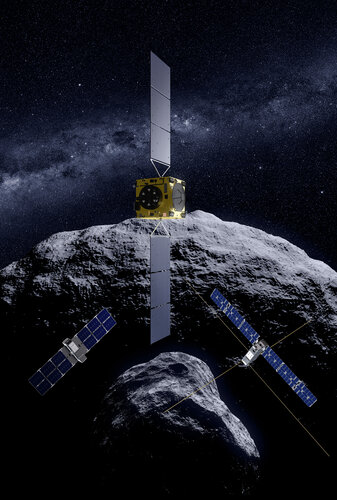
Dutch firm ISISPACE has manufactured more than 600 cereal-box sized ‘CubeSat’ satellites, plus nearly 200 deployment systems used to release them into orbit. Of all of these, the pair of Deep Space Deployers it has overseen for ESA’s Hera asteroid mission for planetary defence have been by far the most challenging. The two systems need to keep their nanosatellite cargo alive and healthy, before releasing them on a precisely staged basis – at a velocity of just a few centimetres per second. Any faster and Hera’s CubeSats would risk getting lost in space.
Last glimpse of Euclid on Earth
Thursday, 29 June 2023 07:23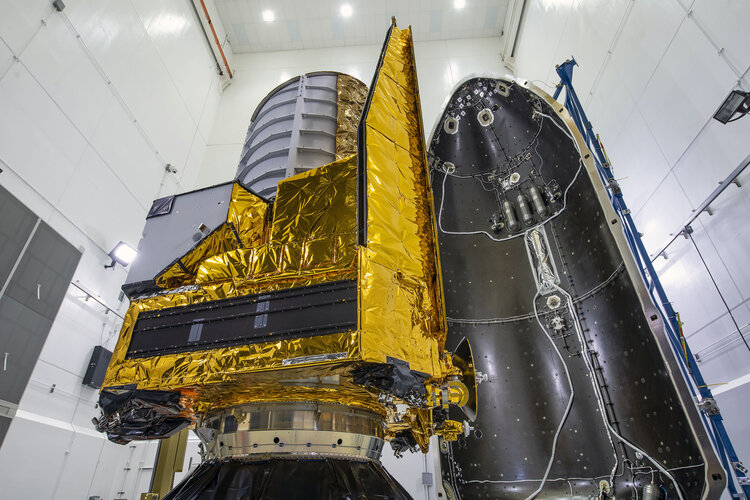 Image:
Image:
On 27 June, this last glimpse of ESA’s Euclid space telescope was caught right before it was encapsulated by a SpaceX Falcon 9 fairing, meaning that the nose of the rocket was installed over the spacecraft.
Euclid is 4.7-m tall and 3.7-m in diameter, fitting nicely in the Falcon 9 fairing with height of 13.1-m and width of 5.2-m.
The Euclid satellite is getting ready for the target launch date of 1 July 2023 from Cape Canaveral in Florida, USA. The Falcon 9 fairing will keep Euclid safe and clean during the last days before lift-off and it will protect the spacecraft
SpaceShipTwo to demonstrate research capabilities on first commercial flight
Wednesday, 28 June 2023 23:52
Virgin Galactic is set to conduct its first commercial SpaceShipTwo suborbital spaceflight June 29, one that will demonstrate the readiness of the vehicle for commercial operations as well as its role as a research platform.
OroraTech orders eight more wildfire-monitoring satellites
Wednesday, 28 June 2023 19:34
Germany’s OroraTech has ordered eight more thermal imaging satellites from Spire Global to expand its wildfire-monitoring constellation next year.
DoD to invest in startup developing mobile space-launch platforms
Wednesday, 28 June 2023 18:26
The Spaceport Company, a startup developing floating launch pads for space rockets, is one of 17 companies selected to receive government funding this year under the National Security Innovation Capital program.
Exploring Euclid's Korsch configuration mirrors
Wednesday, 28 June 2023 17:50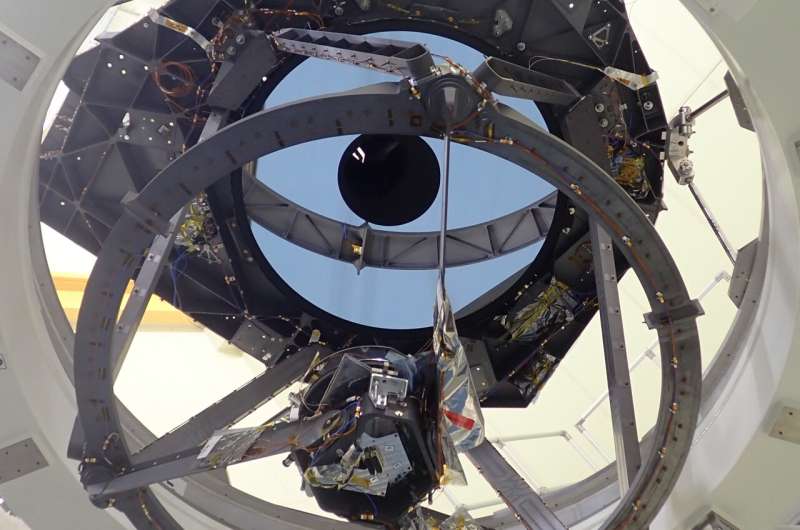
The 1.2-m diameter main mirror of ESA's Euclid mission to unveil the dark universe, seen during assembly, integration and testing. Using this mirror, the spacecraft will map the 3D distribution of billions of galaxies up to 10 billion light years away—looking beyond the Milky Way galaxy to image around a third of the observable universe. By revealing the universe's large-scale structure, and its pattern of expansion, the mission will cast light on the mysterious dark energy and dark matter making up 95% of the cosmos.
All six of Euclid's Korsch configuration mirrors, plus the telescope itself—comprising more than 30 parts as well as the mirrors—as well as the more than 10 parts making up the mission's Near Infrared Spectrometer and Photometer and the optical bench that surrounds them are all made from the same material: not glass, but a ceramic only found naturally in space.
Silicon carbide (SiC) is one of the hardest materials known, used to make cutting tools, high-performance brakes and even bulletproof vests, while being much lighter than glass. It is similar to a metal in having high thermal conductivity but unlike metals can undergo extreme temperature shifts without deforming—making it very attractive for space-based astronomy.
Check out the cool new designs for Europe's future spacesuits
Wednesday, 28 June 2023 17:39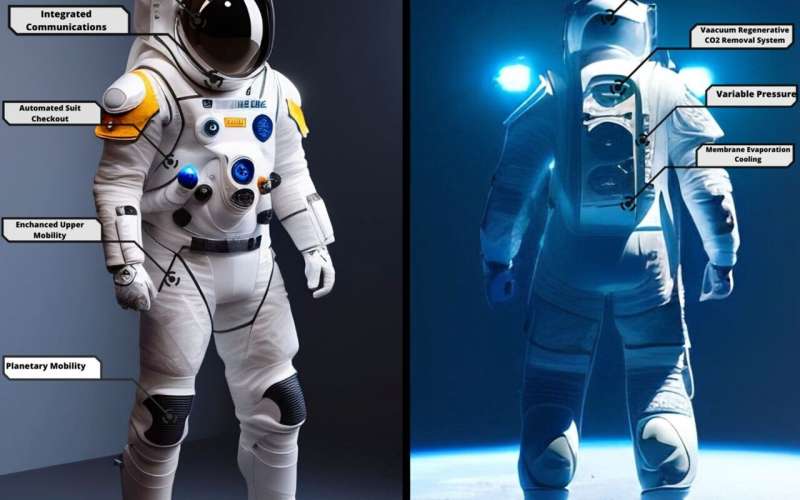
While the European Space Agency isn't planning to build their own spacesuits anytime soon, they want to be ready. ESA recently had the Space Suit Design Competition, allowing the public to propose designs for future European extra-vehicular activity (EVA) suits.
The competition received 90 submissions and experts selected five winners. This first design, above, was created by Oussama Guarraz, focusing on "modernity, cutting-edge technology, innovation, and sustainability.
Reusable rockets could fly back to their launch sites with wings
Wednesday, 28 June 2023 17:38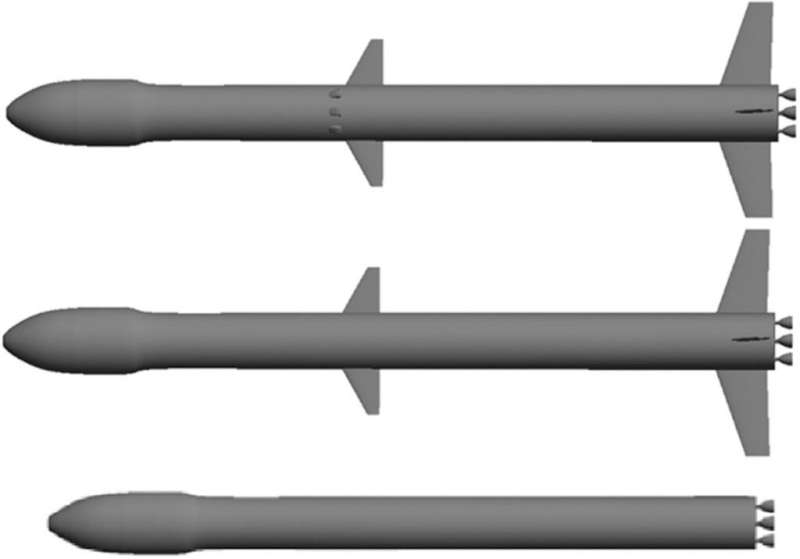
Reusable launch vehicles have been a boon for the commercial space industry. By recovering and refurbishing the first stages of rockets, launch providers have dramatically reduced the cost of sending payloads and even crew to space. Beyond first-stage boosters, there are efforts to make rockets entirely reusable, from second stages to payload fairings. There are currently multiple strategies for booster recovery, including mid-air retrieval using helicopters and nets. Still, the favored method involves boosters returning to a landing pad under their own power (the boost-back and landing maneuver).
This strategy requires additional rocket propellant for the booster to land again, which comes at the expense of payload mass and performance for the ascent mission. As an alternative, researchers from the National Office Of Aerospace Studies And Research (ONERA) propose two new types of strategies that would allow boosters to return to their launch site.
Euclid space mission is set for launch: Here's how it will test alternative theories of gravity
Wednesday, 28 June 2023 17:30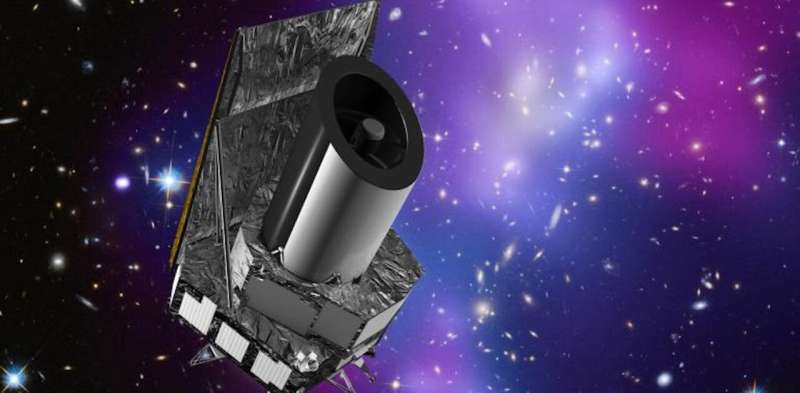
The European Space Agency's (Esa) Euclid mission will launch into space on a Falcon9 rocket from SpaceX on July 1, or soon after. Many of us who have worked on it will be in Florida to watch the nail-biting event.
The mission is specifically designed to study the dark universe, probing both "dark matter" and "dark energy"—unknown substances thought to make up 95% of the energy density of the universe.
But it will also be able to test some strange, alternative models of gravity—potentially challenging Albert Einstein's great theory of general relativity.
Scientists have known about the existence of dark matter for nearly a century now. It was proposed after astronomers noted that galaxies in clusters had mysteriously high speeds. Such speeds should cause the clusters to evaporate unless there was some extra mass holding them together. As this matter wasn't shining in the same way as the visible galaxies, it was dubbed dark matter.
Gravitational lensing is a new tool to see this dark material. This effect relies on our understanding of general relativity.
Above: Orbital develops energy systems for spacecraft under recent awards
Wednesday, 28 June 2023 17:05
Above: Orbital is developing technology to provide energy for on-orbit servicing, assembly and manufacturing with the support of two recent Small Business Innovation Research awards.
All new ESA photo library for high-resolution images
Wednesday, 28 June 2023 12:45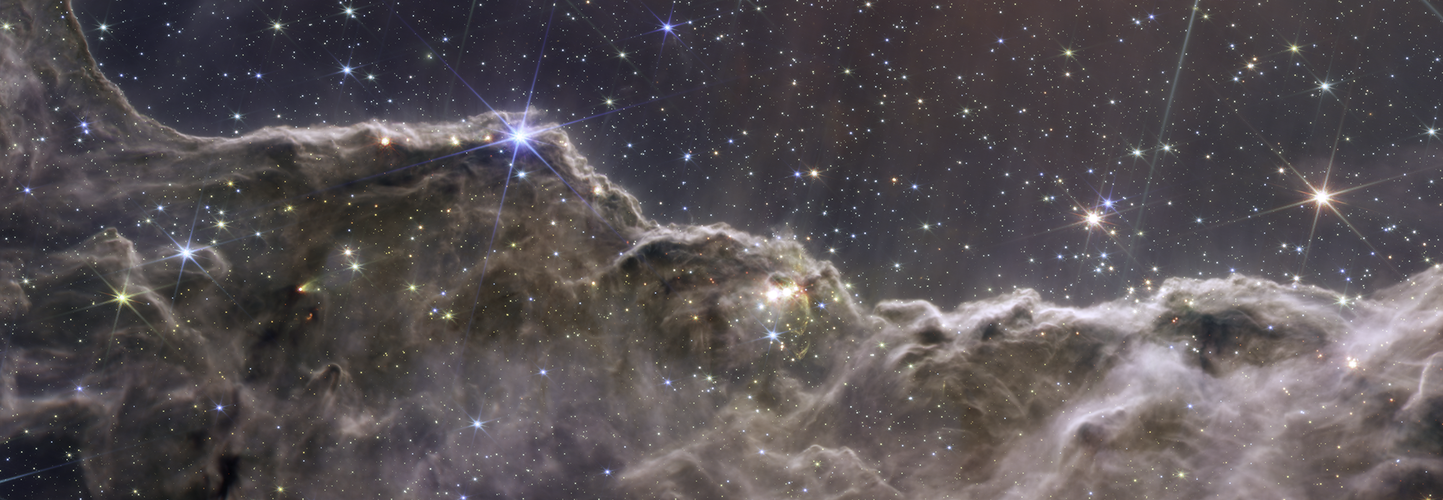
Our ‘ESA Photolibrary for Professionals’ platform has relaunched with a new modern user interface, additional search features and download options. Register for a user account and you can access the largest selection of high-resolution professional images from ESA.
Startup iRocket wins Space Force contract to demonstrate rocket engine
Wednesday, 28 June 2023 12:04
Innovative Rocket Technologies, known as iRocket, won a U.S. Space Force contract to demonstrate a reusable rocket engine for small launch vehicles.
Ramon.Space raises $26 million from Foxconn and other backers
Wednesday, 28 June 2023 11:00
Ramon.Space has raised $26 million from Ingrasys, a subsidiary of Foxconn Technology Group, the Abu Dhabi-based Strategic Development Fund, and venture capital firms.
Sierra Space describes long-term plans for Dream Chaser and inflatable modules
Wednesday, 28 June 2023 10:31
WASHINGTON — As Sierra Space continues to prepare for the first flight of its Dream Chaser vehicle, it is outlining long-term ambitions for both that vehicle and space station modules.
AST SpaceMobile and Maritime Launch Services Boost Capital with Stock Offerings
Wednesday, 28 June 2023 09:49 In a week of significant fundraising for space companies, AST SpaceMobile, Inc. and Maritime Launch Services Inc. have separately announced capital raising ventures.
AST SpaceMobile, Inc. (NASDAQ: ASTS) disclosed the pricing and upsizing of its previously announced public offering of Class A common stock, par value $0.0001 per share. The company plans to sell 12,500,000 shares of Class A
In a week of significant fundraising for space companies, AST SpaceMobile, Inc. and Maritime Launch Services Inc. have separately announced capital raising ventures.
AST SpaceMobile, Inc. (NASDAQ: ASTS) disclosed the pricing and upsizing of its previously announced public offering of Class A common stock, par value $0.0001 per share. The company plans to sell 12,500,000 shares of Class A 